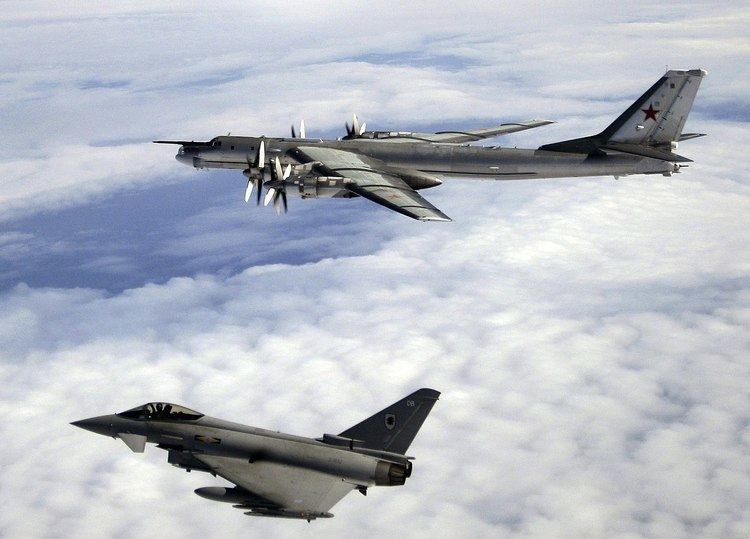 | ||
Quick Reaction Alert, known colloquially as QRA, is state of readiness and modus operandi of air defence maintained at all hours of the day by NATO, mainly involving the Royal Air Force (RAF).
Contents
Some non-NATO countries also maintain QRA, although not necessarily full-time. These include Switzerland, Sweden and Austria.
QRA in the United Kingdom
Pilots on QRA duty are at immediate readiness twenty-four hours a day fully dressed in the Aircrew Ready Room, which are next to the hangars (a hardened aircraft shelter known informally as Q-sheds) which houses the interceptor aircraft, since 2007 the Eurofighter Typhoon. Pilots are on QRA duty around once or twice a month, each a twenty-four-hour shift. Two Typhoon aircraft are on duty, each with two 2,000 litre drop tanks, four Advanced Short Range Air-to-Air Missiles (ASRAAM), and four AIM-120 Advanced Medium Range Air-to-Air Missiles.
Civilian aircraft in the UK are monitored by NATS Holdings at:
Military radar in the UK is controlled by the UK Air Surveillance and Control System (ASACS), looked after by ASACS Force Command. It has Remote Radar Heads (RRH) at:
The radars were Type 93, and are being replaced by the Lockheed Martin AN/FPS-117 system.
QRA response
Air traffic across Europe is controlled by Eurocontrol in Brussels. Military aircraft from Russia can be tracked across Norway, and reported to the Norwegian Joint Headquarters near Bodø, or the Combined Air Operations Centre 2 (CAOC UE) in Uedem, North Rhine-Westphalia close to the border with The Netherlands. The Russian Tu-95 Bear aircraft originate from the Olenya base on the Kola Peninsula and the Tu-160 Blackjack aircraft come from the Engels-2 base near Saratov.
A QRA response involves the fighter aircraft being scrambled to investigate an infringement of the NATO country's airspace. This may also be a civilian aircraft that poses a threat, if not sufficiently responding to air traffic control (ATC); incidents of this nature in the UK are monitored by the Control and Reporting Centre (CRC) at RAF Boulmer, which builds a 3D Recognised Air Picture and RAF Air Command, if notified, decides whether to send a QRA response.
QRA RAF stations
Currently there are two QRA RAF stations, of 1 Group.
History
Quick Reaction Alert is the current development from scrambling by RAF Fighter Command in the Battle of Britain.
United Kingdom
QRA North was moved from RAF Leuchars to RAF Lossiemouth on 1 September 2014.
2012 Olympics
To cover the security for the 2012 Summer Olympics, part of QRA South was briefly moved from RAF Coningsby to RAF Northolt.
